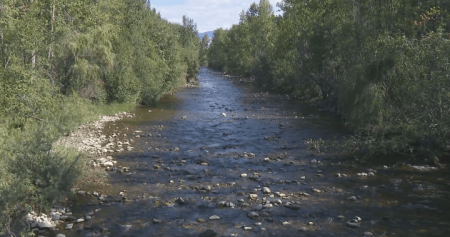The recent snow melt in parts of Saskatchewan has led to an increase in wildfires across the province. Louis Cherpin, who has been a firefighter since 1994 and is now the president of the Saskatchewan Volunteer Firefighters Association, has witnessed the increase in fires over the past 30 years. He attributes this rise to the drier conditions and warmer weather that have been prevalent in the region. According to Cherpin, the duration of firefighting efforts has also increased, with fires burning hotter and faster than before.
The Saskatchewan Public Safety Agency (SPSA) has reported a total of 83 fires as of Monday, which is nearly four times the five-year average. Balgonie fire Chief Doug Lapchuck states that nearly half of the wildfires in Saskatchewan are caused by human activity, such as flicking a cigarette out the window or improperly managing controlled burns. Many areas across western central Saskatchewan are currently under fire bans, and two fires broke out at the Piapot First Nation within a 24-hour period.
SPSA president Marlo Pritchard emphasizes the role that residents can play in reducing the number of fires in the province. Simple tasks, such as removing dead trees and keeping yards clear of combustible debris like leaves, can help prevent fires from starting or spreading. Cherpin echoes the importance of being prepared for any situation, while also expressing hope for rain and moisture to help alleviate the dry conditions contributing to the wildfires.
The 2023 wildfire season in Saskatchewan was one of the worst in nearly two decades, with close to 500 fires occurring. Cherpin highlights the importance of giving back to rural communities through firefighting, and the changes he has witnessed in the landscape over the years. He notes that the time spent fighting fires has increased significantly, and that crews are facing more challenging conditions as a result of the changing climate.
As crews work to battle wildfires across the province, there is a call for residents to do their part in fire prevention and management. Balgonie fire Chief Lapchuck warns about the potential dangers of human activities that can spark fires, while also urging caution and responsibility. The ongoing fire bans in several areas serve as a reminder of the current risks and the need for vigilance in preventing wildfires. Cherpin emphasizes the need for readiness and adaptability in the face of changing weather patterns and environmental conditions.
In conclusion, the increasing number of wildfires in Saskatchewan is a pressing concern for firefighters and officials in the province. With dry conditions, warmer temperatures, and human activities playing a role in igniting fires, it is crucial for residents to take proactive measures to reduce the risk of wildfires. The efforts of firefighting crews, led by individuals like Louis Cherpin, are essential in responding to and containing fires, but community involvement and preventative actions are equally important in mitigating the impact of wildfires in the region.













